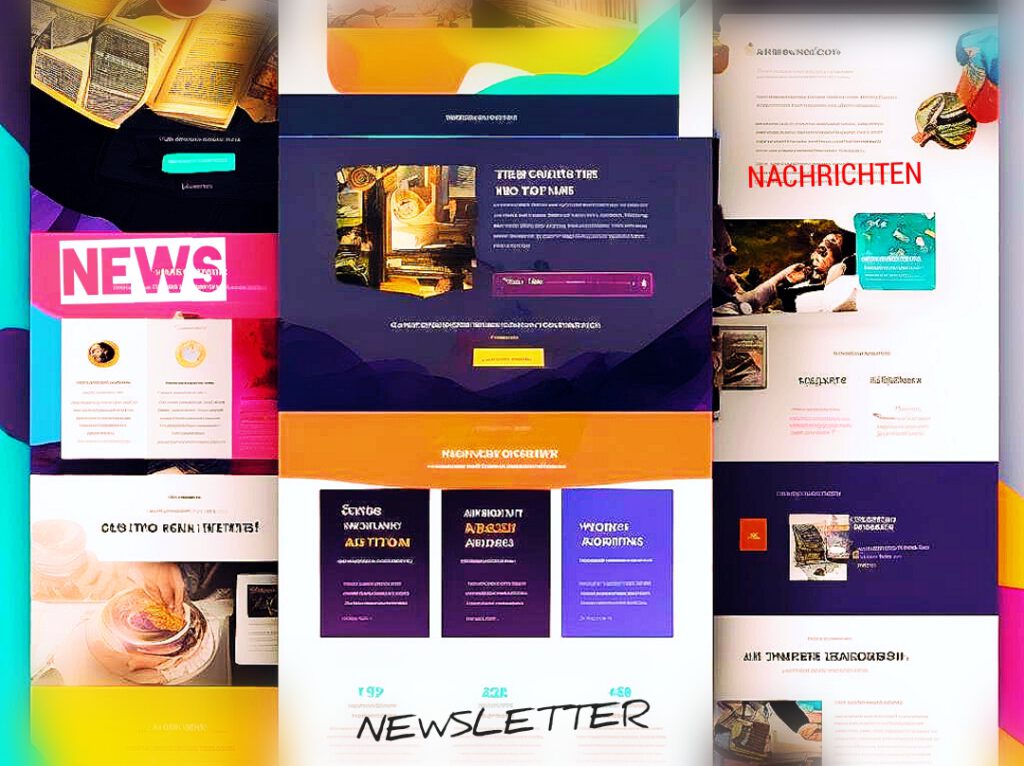The combination of a newsletter and a content-rich website can be a very effective marketing strategy. By providing regular updates and introducing new content from your website, you can motivate subscribers to visit it to find out more. Presenting highlights of the month, for example, encourages attention to certain articles or blog posts and makes the newsletter interesting in the first place.
Another option is to offer exclusive content or a preview of upcoming topics within the newsletter. This tactic creates a certain incentive to subscribe to the newsletter and read it regularly. Surveys or feedback requests can also be integrated to find out directly from your readers what topics they are interested in or what content they would like to see in the future.
A balance between informative content on your website and regular updates in the newsletter promotes a sustainable relationship with your readers and creates an engagement that not only increases the visibility of the website, but also strengthens the loyalty of the target group. Both instruments benefit from each other and the overall marketing strategy becomes even more effective.
Newsletter topics: real-life examples
Marketing is often a multifaceted matter and newsletters can be a valuable addition even to minimalist websites without regular content. Let’s say you are a tradesman with a simple overview of your services and contact options. With these topics, you could nevertheless create a varied and informative newsletter to attract more attention.
1. News: Inform your customers about new services or products that you offer.
2. Advice: Share helpful tips on caring for household items and other objects.
3. Seasonal relevance: Give suggestions for plans that customers could tackle in their homes now.
4. Success stories: Introduce some successfully completed projects to show potential customers what they can expect from you.
5. Special offers: Inform about limited-time offers or discounts on certain services to encourage customers to book an appointment now.
6. Technical articles: Provide detailed instructions for simple DIY projects.
7. FAQs: Answer common questions from customers about your services, prices or the process of work.
8. Engagement: Inform about local events or non-profit projects in which you are active.

How to get email addresses for the mailing list
First, you should add opt-in forms (consent process) to your website that allow visitors to sign up for a newsletter with appropriate incentives. You can also gain new subscribers through advertisements, competitions or other social media campaigns where participants must provide their email address.
Webinars and live events for networking are also great ways to collect email addresses. Participants can be asked to leave their contact details for further information and follow-ups. It also makes sense to actively encourage existing contacts through rewards and invite friends and acquaintances to sign up for the newsletter via referral programs.
What legal frameworks to consider
The most important aspect is the explicit consent of the recipients before you send them a newsletter! This means that subscribers must actively consent, for example by checking a box on a registration form. A transparent privacy policy should make it clear what type of information is collected, for what purpose and for how long the data is stored.
If you operate in the EU or want to target EU citizens, the regulations of the General Data Protection Regulation (GDPR) must be observed. Also check the privacy policies and agreements of third-party services and sending tools to ensure that they are compliant. Recipients should also be informed that they can withdraw their consent or unsubscribe from your newsletter at any time. The marketing concept is based on voluntariness.
Newsletters: The key to effective customer loyalty | The best tools for creating them | Legally compliant methods for addresses – all articles at a glance.

